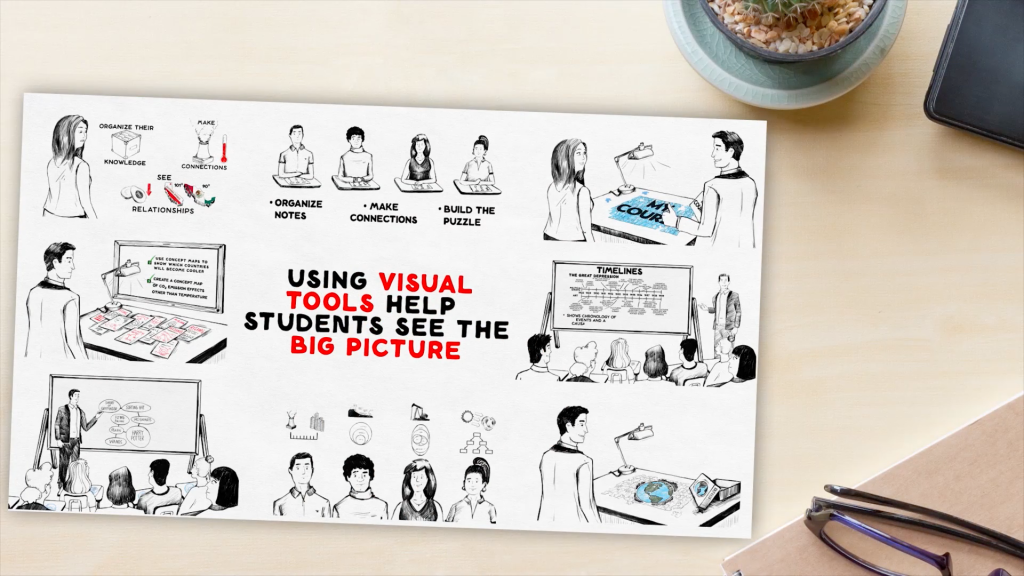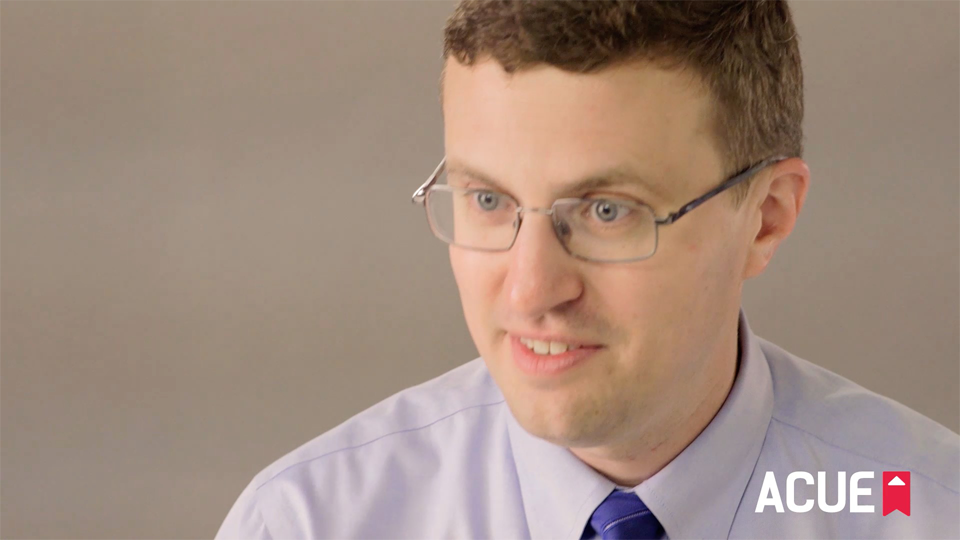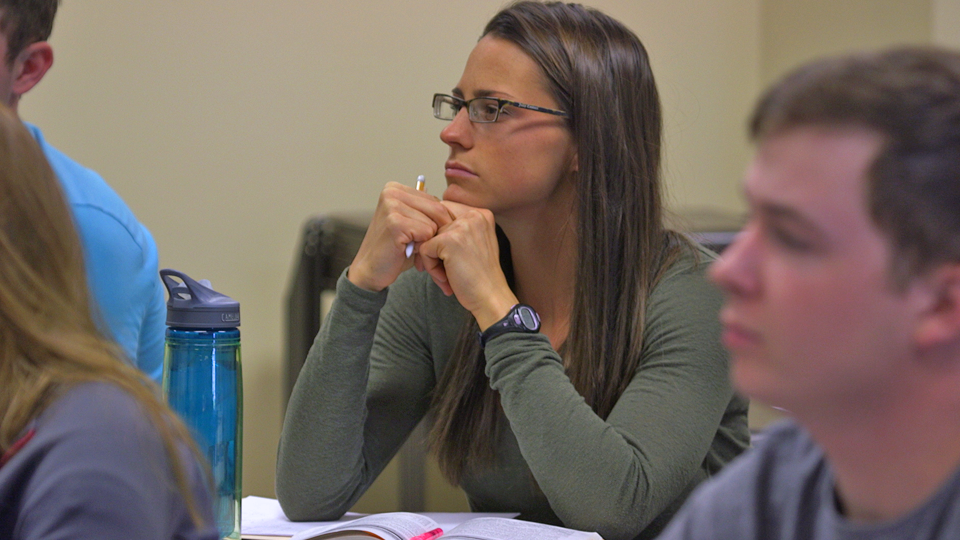
News Roundup: Interactions and Innovations
This week, whether it’s mentorship, group work, free speech, or deep discussions, open communication is a priority in college classrooms across the country.
Sign up for The ‘Q’ Newsletter for the latest news and insights about higher education teaching and learning.
At the University of Southern Mississippi, faculty meet for 90 minutes every Friday to discuss teaching strategies as part of ACUE’s Course in Effective Teaching Practices. (Hattiesburg American)
Peer mentoring relationships among graduate students can support pedagogical training, write professors Estee Beck and Mariana Grohowski. (Digital Pedagogy Lab)
Group work is most effective when educators prepare students to collaborate in teams and provide ongoing support and feedback throughout a project, according to researchers who examined the practice at two different institutions. (The Scholarly Teacher)
Academics encouraged class discussions and provided other forums for listening in the wake of last week’s surprising Election Day results. (The Chronicle of Higher Education)
By applying three key ideas, faculty can effectively use Learner Experience Design to merge human interaction with quality course design, resulting in increased student engagement. (EdSurge)
A lecturer proposes a middle ground between rigidity and flexibility by granting assignment extensions on a case-by-case basis, prioritizing students’ learning over adhering to rules. (Vitae)
Lasell College has taken measures to promote free speech and encourage diverse opinions in discussions while educating both students and faculty about bias and hurtful language. (University Business)
Instructors are searching for forums and structures to facilitate student discussions about sensitive issues. (EdSurge)

MDC’s Eduardo Padrón to Receive Presidential Medal of Freedom
The nation’s highest civilian honor, the Presidential Medal of Freedom, will be awarded to Eduardo Padrón, the White House announced on Wednesday. Dr. Padrón is the President of Miami Dade College and serves on ACUE’s Board of Advisors.
Continue…
Week in Review: Fostering a culture of innovative teaching

News Roundup: Visual Learning
This week, digital classroom technology gathers steam in the form of focus exercises, open-source textbooks, and an all-around need for digital literacy. Meanwhile, finances—abundant or not—drive schools to experiment with new techniques for teaching effectively and improving student outcomes.
Sign up for The ‘Q’ Newsletter for the latest news and insights about higher education teaching and learning.
Vanderbilt University’s Derek Bruff says teaching center directors should focus on individual faculty members while also prioritizing more systematic work. (The ‘Q’ Blog)
Inspired by her students’ questions about police shootings, a Montclair State University professor created her own course reader and is encouraging educators and students to openly discuss issues across campus. (Chronicle of Higher Education – Paywall)
Technology in the classroom can be a distraction, to the detriment of student learning, but a professor in California says videos games that incorporate meditation and exercise could improve focus. (nprEd)
A new grant program in California is making $25 million available for schools to test new approaches to improve student outcomes. (EdSurge)
ACUE is a proud sponsor of the 2016 APLU Annual Meeting, where more than 1,400 public university leaders meet and exchange ideas with colleagues from across North America. Attending? Let us know. (APLU)
With higher education facing new challenges and serving new demographics, some colleges are hoping newly appointed presidents can guide their institutions through stormy weather. (Diverse Issues in Higher Education)
With state higher education funding still $10 billion below prerecession levels, universities in hard-hit states are coping by experimenting with new income-sharing programs and increasing class sizes. (New York Times)
Tara Lifland, an instructional designer at George Washington University, offers three arguments for using open-source digital textbooks over print. (EdTech)
These fifth graders can’t vote, so they took their civic enthusiasm to a nearby campus and urged college students to get to the polls. (nprEd)
Providing students with timely feedback should be a priority for all instructors, and greater attention to digital literacy could help faculty meet this goal. (Teaching in Higher Ed)
Week in Review: Visual Learning in an Election Year

Connecting the Dots: Visual Learning in an Election Year
The application of data visualization to present polling data in this year’s election has given Dr. Derek Bruff a renewed appreciation for visual learning. Expanded access to these types of tools, Dr. Bruff says, can be valuable resources for instructors and students as a way to deepen their learning in the classroom. We caught up with Dr. Bruff ahead of this week’s POD Network Conference, where he will discuss ways to use concept maps and other visual learning tools at a session sponsored by ACUE.
Dr. Bruff, director of Vanderbilt University’s Center for Teaching, is an expert consultant for ACUE’s Course in Effective Teaching Practices. He is featured in the module Using Concept Maps and Other Visualization Tools.
On what inspires his work in educational development.
Some folks in this line of work are really drawn to the faculty development piece of it, working with faculty members over time, and helping them grow and develop. I like that, but for me the motivation has been always been the student learning experience. If I can work with instructors, and help them create more meaningful and engaging learning experiences for their students, then I feel I can have a pretty big, but indirect, impact on a lot of students.
I think back to my days as a student in classes that weren’t engaging and didn’t seem relevant. I just kind of slogged through. I had other classes that were interesting and relevant, and class time was used really productively. I want more students to have an experience where they walk into a college classroom and they’re excited to be there and learn. I know what a key role the instructor plays in that, so if I can help instructors adopt teaching practices that engage their students more deeply in the learning process, I know there will be a big impact there.
On his advice for new directors for teaching and learning.
There is a lot of value in consulting one-on-one with instructors and really trying to understand—at the individual level—what teaching looks like for each instructor. What are their goals? What’s easy? What’s challenging? That individual kind of consultation continues to be the kind of bread-and-butter work of my teaching center, and I think that needs to be a big piece of what you do as a teaching center.
The other piece of advice I would offer, and this is one of the things that we’ve had a lot of success with at Vanderbilt, is to reach out to individual departments and try to work with them to figure out what teaching looks like in that department and figure out how you can be helpful to their instructors. You may find that in one department there are a lot of instructors who are struggling to get students talking in class. In another department it might be a completely different need, like trying to organize very large classes. Inclusive teaching and diversity in the classroom comprise another issue with which faculty may be grappling.
So working with individual faculty is an important source of information and context for your job, but you also need to be thinking about how you can partner with a department to meet needs on a broader basis.
Sign up for The ‘Q’ Newsletter for the latest news and insights about higher education teaching and learning.
On the importance of teaching digital and informational literacy.
We want to teach our students to think critically, right? On some level, this is why we have colleges and universities. We’re preparing students to leave us and do something interesting and useful with themselves.
So we have an opportunity to help our students become more informed and more reflective and critically thoughtful citizens in our culture. And I think for a lot of students that making those connections helps them see the relevance of the material in the courses they’re taking.
I’m teaching a statistics course right now, and so we’re going to talk about margins of errors in polling and what that means and how we interpret that. Not every topic in stats is going to have such an obvious connection to current events, but I think it’s important to look for those connections because it helps students to be more informed citizens when they leave. It also helps show them the relevance of the material that they’re studying.
More from the ACUE Expert Series: Saundra McGuire: Strategies to Teach Students How to Learn
On what the election year has taught him about visual learning.
This being an election year, I’ve been really enjoying some of the data visualizations that have come out of places like FiveThirtyEight, which does a lot of aggregation of polling data. There are so many interesting examples of data visualization available now, and I think there is a need for students to make sense of those things and develop skills for interpreting various data visualizations and graphics. Part of it comes back to this idea of thinking critically about the news you consume: Some infographics can shed light on a phenomenon, and sometimes they actually hide the story or tell one story at the expense of another.
So this is just a reminder that it’s helpful to have visual tools to consider in our teaching. Sometimes we default to the verbal in many ways, where we think “Let’s tell our students, let’s explain this to them.” Instead, we could think “I wonder if there’s a good visual for this?” Fortunately, there is so much available now that we may not even have to create anything.

News Roundup: Sociopolitical Learning
This week, the focus is on how we can help our students become engaged citizens through effective instruction. Plus, educators encourage students to examine the literary heroes of the past and the robot TAs of the future.
Sign up for The ‘Q’ Newsletter for the latest news and insights about higher education teaching and learning.
In a year where the norms of political discourse have been stretched, political science professors are conflicted about how to strike an appropriate balance when discussing the election in their classroom. (Chronicle of Higher Ed)
Colleges and universities are offering students a range of civic learning experiences, from voter registration drives to national debate-watch events. (Inside Higher Ed)
Joshua Kim writes that the higher education community isn’t talking about many teaching and learning innovations happening around the country. He asks readers to share their ideas for getting the word out. (Inside Higher Ed)
Cognitive scientists have largely debunked the idea that there is such a thing as an average brain. One Harvard professor is on a mission to help educators value “patterns of individuality” when creating learning experiences for students. (EdSurge)
Small interventions can help underperforming college students thrive in the classroom and even rethink their place in the world, writes David Kirp. (The New York Times)
As seven small, selective, and largely white college campuses appoint their first black presidents, students and faculty hope the new leadership leads to increased diversity across campus. (The Hechinger Report)
Two English professors blend creativity and scholarship through a new exhibition that compares literary greats William Shakespeare and Jane Austen. (The Washington Post)
A Georgia Tech professor has made waves with his experiment of using a robotized teaching assistant in the classroom—and raised questions about the use of artificial intelligence in higher education. (The Chronicle of Higher Education – Paywall)
Week in Review: Civic Learning in an Election Year

News Roundup: Communication is Key
This week, communication is key: Interdisciplinary activity and interpersonal skills are crucial for employment after graduation; Educators and researchers are collaborating with each other and with students to solve problems.
Sign up for The ‘Q’ Newsletter for the latest news and insights about higher education teaching and learning.
Maha Bali says that becoming a self-directed learner is key for adults participating in online learning. Read about her six tips for effective online adult learning. (ProfHacker)
Graduates of liberal arts programs may experience difficulty finding employment, while technical education graduates may struggle to advance in their careers without broader education. One college president argues that the solution is each program borrowing elements from the other. (University Business)
Three instructors share the benefits of co-teaching, including opportunities for mentorship and collaboration, and a few challenges that may arise. (ProfHacker)
The annual Survey of Faculty Attitudes on Technology revealed that faculty are able to serve a more diverse set of students with academic technology, but they are less likely to agree that technology has significantly improved student outcomes. (Inside Higher Ed)
Attrition in community colleges is often highest for those students who are undeclared or liberal arts majors. To help students better connect to their courses, a community college dean suggests taking a lesson from preprofessional programs and helping students connect to future careers. (Inside Higher Ed)
Graduates in the class of 2015 with degrees in liberal arts and humanities achieved higher employment rates and starting salaries than their peers in the 2014 class, which some attribute to employers’ increasing interest in hires with strong communication skills. (Wall Street Journal)
To empower the next generation of leaders, colleges and universities can include more experiential learning, increase partnerships with researchers and practitioners, and help students focus on solving real-world “grand challenges.” (Inside Higher Ed)
A new model of academic journal publishing, yet to widely catch on in the United States, proposes charging authors to fund open access for their readers. (The Conversation)
